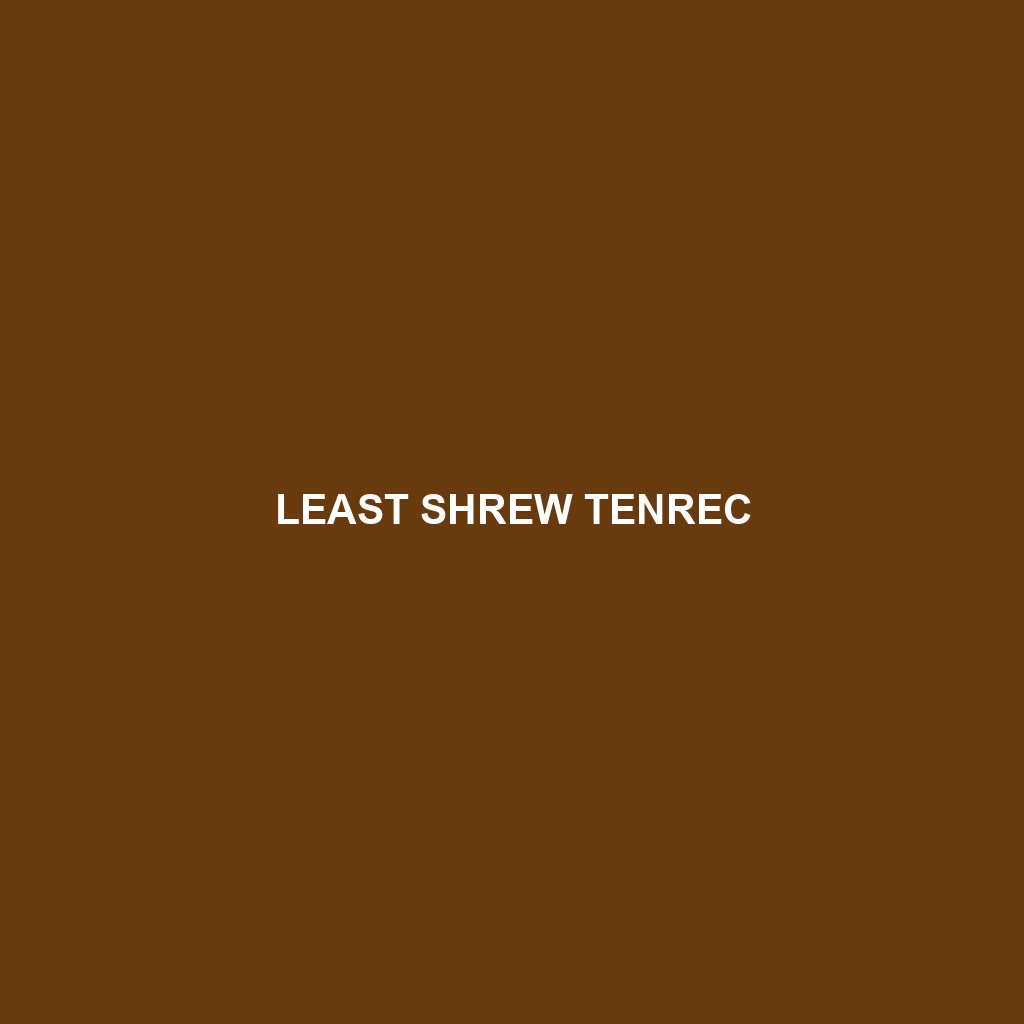Least Shrew Tenrec (Microgale pusilla) Overview
The Least Shrew Tenrec, scientifically known as Microgale pusilla, is a small, insectivorous mammal native to Madagascar. This elusive creature is a member of the family Tenrecidae and is notable for its shrew-like appearance and fascinating adaptations that allow it to thrive in its unique environment.
Physical Characteristics
Size and Weight:
The Least Shrew Tenrec is one of the smallest members of the tenrec family, with an average length of 5 to 10 centimeters (2 to 4 inches), and a tail length that can range from 2 to 5 centimeters (0.8 to 2 inches). They typically weigh between 7 to 15 grams (0.25 to 0.5 ounces).
Coloration:
Their fur is generally short and dense, varying from dark brown to grayish-brown, which provides excellent camouflage against the forest floor and leaf litter of their natural habitat.
Special Features:
One distinguishing feature of the Least Shrew Tenrec is its elongated snout, which is flexible and well-adapted for probing into crevices and leaf litter for insects and other small prey. They also possess small, but sharp claws that assist in digging and foraging.
Behavior
Social Interactions:
Least Shrew Tenrecs are generally solitary animals, coming together only for mating purposes. They communicate primarily through vocalizations and scent markings.
Feeding Habits:
These tenrecs are insectivorous, feeding on a diet mainly composed of insects, arachnids, and other small invertebrates. They use their keen sense of smell to locate prey, and their agile movements allow them to capture it swiftly.
Ecological Roles:
As insectivores, Least Shrew Tenrecs play a crucial role in controlling insect populations, which helps to maintain ecological balance within their habitat. They also serve as prey for larger predators, thus forming an integral part of the food web.
Habitat and Adaptations
Natural Habitat:
Least Shrew Tenrecs are found in the tropical rainforests of Madagascar, particularly in regions with dense undergrowth and abundant leaf litter. They are also known to inhabit secondary forests and plantations when primary forests are not available.
Adaptations:
Their small size and cryptic coloration are key adaptations that help them avoid predators. Additionally, their nocturnal habits reduce competition for food and decrease the likelihood of encountering diurnal predators. Their elongated snout and sensitive whiskers are also adaptations that aid in detecting and capturing prey in the dark.
Conservation Status
Current Status:
The International Union for Conservation of Nature (IUCN) currently lists the Least Shrew Tenrec as “Least Concern,” owing to its relatively wide distribution and presumed large population. However, habitat destruction due to deforestation and agricultural expansion poses potential threats.
Conservation Efforts:
Efforts to conserve this species primarily focus on habitat protection and reforestation initiatives in Madagascar. Continued research and monitoring are essential to ensure the population remains stable.
Fun Facts
1. Unique Sensory Abilities: Despite their poor eyesight, Least Shrew Tenrecs have an excellent sense of smell and touch, which they rely on heavily for navigation and hunting.
2. Diverse Family: Tenrecs are a highly diverse family of mammals, with members ranging from shrew-like to hedgehog-like appearances, showcasing a fascinating example of adaptive radiation.
3. Hibernation: Some tenrec species are known to hibernate, but the Least Shrew Tenrec remains active year-round, even during the cooler months.
The Least Shrew Tenrec is a remarkable example of Madagascar’s unique biodiversity. Its specialized adaptations and vital ecological role make it a fascinating subject of study and an important species to protect.
